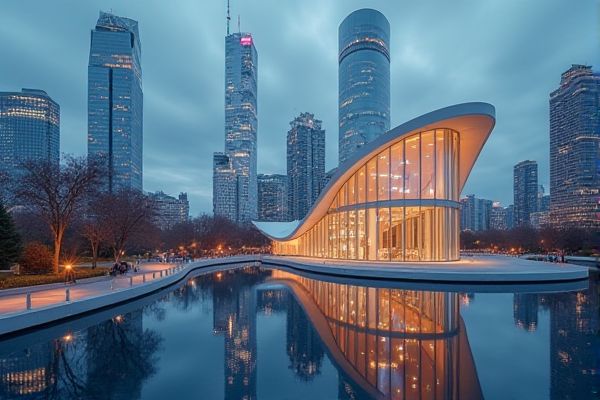
AI in architectural design enhances efficiency and creativity by automating repetitive tasks and generating innovative solutions. Machine learning algorithms analyze vast amounts of data, enabling architects to optimize building layouts, energy usage, and material selection. Generative design tools allow for unique structures tailored to specific environmental and aesthetic requirements. Enhanced visualization techniques, such as virtual reality and 3D modeling, provide clients with immersive experiences, facilitating better decision-making throughout the design process.
AI usage in architecture design
Generative design algorithms
Generative design algorithms can enhance architectural design by optimizing building structures for efficiency and aesthetics. Their application allows architects to explore a wide range of design possibilities quickly, potentially leading to innovative solutions that reduce material waste. For example, institutions like MIT have utilized these algorithms to create sustainable designs that adapt to environmental factors. The adoption of AI in this field increases the chances of developing unique structures that meet both functional and aesthetic needs.
Parametric modeling
AI in architecture design, particularly through parametric modeling, presents opportunities for enhanced creativity and efficiency. By using algorithms, architects can quickly generate and analyze numerous design options, refining them based on specific criteria. Institutions like the Massachusetts Institute of Technology are exploring AI's potential to optimize building functions and aesthetics. This technology could lead to innovative structures that adapt to environmental conditions and user needs.
Autonomous construction robots
AI usage in architectural design can streamline workflows and enhance creativity, potentially leading to innovative building solutions. The integration of autonomous construction robots may reduce labor costs and increase efficiency on job sites. For instance, using robotics in construction can automate repetitive tasks, allowing architects to focus on design intricacies. This combination of AI and robotics might create opportunities for sustainable and customizable building practices in the architecture sector.
Building Information Modeling (BIM) integration
AI can enhance architectural design by optimizing spatial layouts and improving energy efficiency. The integration of Building Information Modeling (BIM) with AI algorithms enables real-time analysis and data-driven decision-making. This synergy can lead to more accurate project timelines and budgets, potentially reducing overall construction costs. The chance of innovation in design methodologies increases as AI provides insights into structural performance and sustainability options.
Sustainability optimization
AI can enhance architecture design by streamlining the planning process and enabling more efficient designs. Tools like generative design software can analyze building performance, leading to sustainability optimization. For instance, firms like Zaha Hadid Architects are experimenting with AI to create structures that use energy and resources more effectively. This technology increases the chance of creating environmentally friendly buildings while reducing waste.
Virtual reality (VR) visualization
AI-driven tools can enhance architectural design by optimizing space utilization and energy efficiency. Virtual reality (VR) visualization allows architects and clients to immerse themselves in a realistic representation of designs before construction. By integrating AI and VR, architects can quickly analyze design options and assess user experience. This combination increases the likelihood of achieving client satisfaction and reducing costly modifications during the building process.
Smart materials innovation
AI in architectural design can increase efficiency by generating multiple design iterations quickly. Smart materials, such as self-healing concrete, may enhance structural durability and reduce maintenance costs. The integration of AI can optimize energy usage in buildings, leading to lower operational costs. These advancements present opportunities for architects and builders to create more sustainable and resilient environments.
Energy efficiency prediction
Utilizing AI in architectural design can enhance energy efficiency predictions significantly. For instance, firms like Zaha Hadid Architects are exploring AI to optimize building layouts and energy consumption. The possibility of integrating machine learning algorithms enables architects to analyze vast datasets, leading to smarter design decisions. This approach can result in reduced operational costs and improved sustainability outcomes for new constructions.
Urban planning simulation
AI can enhance architectural design by generating innovative and efficient building layouts, improving the design process. In urban planning simulations, AI assists in optimizing traffic flow and resource allocation through data analysis. These applications can lead to cost savings and improved sustainability in projects like smart city development. For instance, a firm such as Gensler uses AI tools to create adaptable designs that respond to community needs.
Risk assessment and safety analysis
AI can significantly enhance architecture design by providing predictive analyses that optimize building performance. In risk assessment, algorithms can analyze thousands of scenarios to identify vulnerabilities in structural integrity. Safety analysis benefits from AI by simulating various conditions to ensure adherence to safety regulations. Tools developed by institutions like MIT can aid architects in assessing potential design flaws before construction begins.
 techknowy.com
techknowy.com